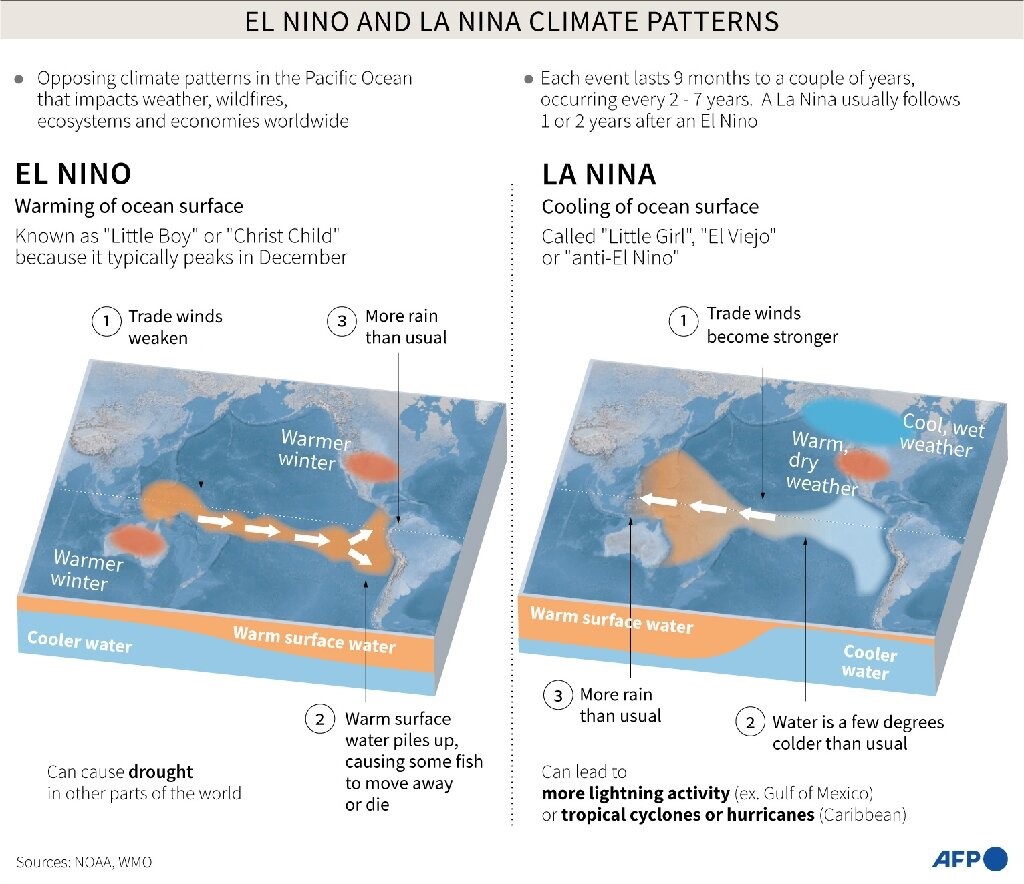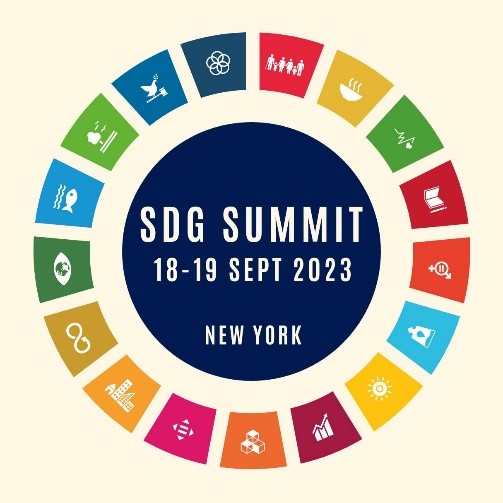- Gandhi’s opposition to caste based separate elections
- Adi Shankaracharya Statue in Omkareshwar, MP
- Neuralink’s Brain-Computer Interfaces (BCIs)
- El Nino Weather Phenomenon
- Personality Right
- SDG Summit 2023
Gandhi’s opposition to caste based separate Elections
- Context:
- Mahatma Gandhi utilized fasting as a potent tool to advocate for change during India’s struggle for independence, employing it both as a form of personal atonement and as a means to exert pressure on the British authorities to address his demands.
- The Gandhi-Ambedkar Debate:
- In September 1932, Gandhi initiated a hunger strike within the confines of the Yerawada Central Jail in Pune, opposing the concept of separate electorates for the harijans (lower castes).
- This action sparked a heated debate with another prominent leader, B.R. Ambedkar.
- Legacy of the Debate:
The “Gandhi-Ambedkar debate” centered around their differing perspectives on caste and ultimately played a significant role in shaping India’s current reservation system.
- Gandhi’s Shifting Views on Caste:
- Initially, Gandhi held orthodox beliefs regarding caste, endorsing restrictions on intermingling and intermarriage, and regarding caste as an integral part of Hinduism.
- However, as he became a prominent figure in India’s independence movement, his views evolved, influenced in part by the emerging Dalit movement.
- He began advocating for unity and opposing untouchability, referring to untouchables as “harijans” or children of God.
- In 1936, Gandhi wrote, “I do know that it [untouchability] is harmful both to spiritual and national good.”
- Ambedkar’s Radical Perspective on Caste:
- R. Ambedkar’s stance was more radical than Gandhi’s. He believed that mere reforms would not undo centuries of discrimination.
- Ambedkar argued that genuine change would only come when the oppressed themselves rejected their condition, including the divine authority of the shastras (holy scriptures) that upheld caste.
- He emphasized that political power was crucial for lower castes to address their grievances and proposed separate electorates as a form of affirmative action.
- This proposal involved lower castes having separate electorates to vote for candidates from their own community as well as in the general electorate, with the belief that this would empower them.
- Gandhi’s Opposition to Separate Electorates:
- Gandhi opposed separate electorates, contending that they did little for lower castes.
- He believed that lower castes should aspire to leadership rather than settling for a small share of seats.
- Gandhi also had concerns that separate electorates would further divide Hindu society and play into the hands of British colonial rulers who exploited internal divisions.
- Rising tensions between Hindus and Muslims at the time exacerbated Gandhi’s worries, as separate electorates for lower castes alongside those for Muslims would weaken the unity of the Hindu community.
- The Yerawada Fast and the Poona Pact:
- In September 1932, Gandhi initiated a hunger strike in Yerawada Jail against separate electorates for castes, viewing it as a “God-given opportunity” to sacrifice his life for the downtrodden.
- Ambedkar faced a dilemma as giving in to Gandhi’s demands conflicted with his own ideas.
- However, Gandhi’s immense popularity and the potential for violence against Dalits pressured him.
- Ultimately, Ambedkar signed the Poona Pact under duress, securing reservations for lower castes while relinquishing the idea of separate electorates.
- Legacy of the Fast:
- Opinions on Gandhi’s fast vary, with some viewing it as a preventive measure against British “divide and rule” tactics and others as a form of coercion, as Ambedkar had limited options but to concede.
- Ambedkar questioned why Gandhi did not fast against untouchability itself.
- The legacy of the debate persists, with the Poona Pact addressing immediate concerns but leaving unresolved issues related to political representation and social transformation within India’s caste system.
Ambedkar later expressed his view that the Joint Electorate was a “Rotten Borough” that allowed Hindus to nominate an untouchable as a representative but essentially as a tool of the Hindus.
Adi Shankaracharya Statue in Omkareshwar, MP
- Context:
- A towering 108-foot-tall statue of the revered Hindu saint Adi Shankaracharya, known as ‘Ekatmata Ki Pratima’ (Statue of Oneness), was recently unveiled in Omkareshwar, located in the Khandwa district of Madhya Pradesh.
- This initiative forms a crucial part of the government’s broader strategy to promote Omkareshwar as a prominent religious and tourist destination.
- Adi Shankaracharya: A Concise Overview:
- Adi Shankaracharya, also referred to as Sankara (Jagatguru), was a distinguished Indian philosopher and theologian who ardently championed the cause of ancient Hinduism.
- His birthplace, Kaladi, situated in Ernakulam, Kerala, is on the verge of receiving national monument status. Under the tutelage of his guru, Govinda Bhagavatpada, Adi Shankaracharya diligently delved into texts such as ‘Gaudapadiya Karika,’ ‘Brahmasutra,’ Vedas, and Upanishads.
- He propagated the philosophies of ‘Advaita Vedanta’ and ‘Dashanami Sampradaya,’ earning the revered title of ‘Shankaracharya’ among his devoted disciples.
- His Philosophy: Advaita Vedanta:
- Shankaracharya’s philosophical doctrine, known as ‘Advaita Vedanta,’ advocates non-dualism.
- It posits that the world’s existence stems from the creative energy (Maya) of Brahman, the ultimate, transcendent, and immanent God described in the later Vedas.
- According to Advaita Vedanta, the transcendental self of the universe (Atman) and the experiencing self (Jiva) are fundamentally identical—both are Brahman.
- However, due to individual perspectives, the individual self appears distinct, much like space inside a container seems separate from space as a whole.
- Advaita Vedanta asserts that understanding Brahman eradicates errors stemming from ignorance and mistakes (Avidya), leading to liberation from the cycle of reincarnation and worldly bondage.
- Disciples of Adi Shankaracharya:
Shankaracharya’s teachings were carried forward by four prominent disciples:
- Padmapada: Renowned for his profound devotion and poetic skills.
- Totakacharya: Devoted to Shankaracharya’s mission and celebrated for his composition “Totakashtakam.”
- Hasta Malaka: A child prodigy who astonished Shankaracharya with his profound grasp of Advaita philosophy.
- Sureshwara: Initially a householder, he became a disciple after losing a philosophical debate to Shankaracharya.
· Contributions of Adi Shankaracharya: Adi Shankaracharya made significant contributions to Hinduism: 1. He introduced the ‘Shanmata’ system, emphasizing the worship of five principal deities and restoring the Dashanami structure. 2. Shankaracharya composed numerous devotional and meditative hymns and authored essential texts on Advaita Vedanta, including commentaries on major scriptures. 3. He played a pivotal role in revitalizing Hinduism at a time when it faced challenges from Jainism and Buddhism, promoting unity and re-establishing traditional practices. 4. Adi Shankaracharya established four monastic institutions (Mathas) in different parts of India, effectively unifying the nation and codifying leadership roles: |
Monastic institutions (Mathas) by Adi Shankaracharya
- Sri Sringeri Sharada Peetam in Chikmaglur, Karnataka.
- Jyotir Matha in the Garhwal region, Uttarakhand.
- Kalika Matha in Dwarka, Gujarat.
- Govardhana Matha in Puri, Odisha.
Neuralink’s Brain-Computer Interfaces (BCIs)
- Context:
Neuralink, a brain implant company founded by Elon Musk, is making significant progress towards the development of brain implants for human use.
- Neuralink’s Vision
Neuralink employs minuscule brain implants to facilitate the control of neural signals related to movement. These implants enable the conversion of thoughts into actions through a wireless application.
- Science behind Brain-Computer Interfaces (BCIs)
- This technology relies on a tiny chip implanted within the brain, which reads and transmits brain signals to an application, effectively translating thoughts into actions.
- Initially, its applications include assisting individuals with paralysis in controlling a computer cursor using their thoughts.
- Some BCIs employ sensor-equipped structures, similar to hairnets, to detect brain signals and can stimulate various regions of the brain, offering potential treatments for conditions like depression.
- India’s Role in Brain Tech
- India is actively contributing to the advancement of brain technology.
- Institutions such as C-DAC are working on BCIs designed to capture brain signals indicative of intentions, and the All India Institute of Medical Sciences is conducting tests in this field.
- BrainSight AI, an Indian startup, specializes in mapping brain connections to gain insights into neurological conditions.
- Indian Innovations and Their Impact
- Indian BCIs, similar to those developed by Neuralink, aim to enhance the mobility and communication of paralyzed patients.
- Additionally, they hold promise in treating mental disorders, including schizophrenia. Indian hospitals are currently conducting tests to evaluate the effectiveness of these technologies.
Challenges Ahead
- Invasive BCIs, such as those developed by Neuralink, face regulatory hurdles and require extensive data collection.
- On the other hand, non-invasive BCIs are progressing more swiftly. Indian research institutions are actively engaged in testing these technologies and mapping the complexities of the human brain.
El Nino Weather Phenomenon
Context:
During her speech at the United Nations General Assembly (UNGA), Peruvian President Dina Boluarte called for international cooperation to address the impacts of El Nino.
But what exactly is El Nino?
- Origin and Discovery:
- The term “El Nino” is of Spanish origin, meaning “little boy” or “Christ child.”
- South American fishermen first identified this phenomenon in the early 17th century.
- El Nino events, characterized by warm Pacific Ocean waters, typically occur in December, which inspired the name.
- Climate Interaction:
- El Nino is a significant ocean-atmosphere climate interaction characterized by periodic warming in sea surface temperatures in the central and east-central Equatorial Pacific.
- It is often associated with high atmospheric pressure in the western Pacific.
- Impact on Indian Monsoons:
- El Nino adversely affects the Indian monsoons, impacting agriculture in India.
In a normal monsoon year:
- Peru’s coast has higher pressure compared to northern Australia and Southeast Asia.
- The Indian Ocean is warmer than neighboring oceans, resulting in relatively lower pressure.
- Moisture-laden winds move from the western Pacific towards the Indian Ocean.
- Lower land pressure in India draws these moist winds inland.
- During El Nino events:
- El Nino warms the surface water off the Peruvian coast.
- Warm water disrupts or reverses the normal trade winds.
- Moisture-laden winds shift towards Peru from the western Pacific (near northern Australia and Southeast Asia).
- This leads to heavy rainfall in Peru during El Nino years.
- India experiences reduced monsoon rains during El Nino events.
The severity of the rainfall shortage in India correlates with the temperature and pressure differences.
- Counterpart of El Nino, known as La Nina:
- La Nina Overview:
- “La Nina” translates to “little girl” in Spanish and is sometimes referred to as “El Viejo” or “cold event.”
- It occurs when Eastern Pacific water temperatures become colder than usual.
- La Nina results in strong high pressure over the eastern equatorial Pacific, leading to low pressure in the western Pacific and Asian regions.
- Its effects include drought in Peru and Ecuador, heavy floods in Australia, and high temperatures in the Western Pacific, Indian Ocean, and off the Somalian coast.
- La Nina tends to bring good monsoon rains to India, benefiting Indian agriculture.
- Frequency and Duration:
- El Nino and La Nina events typically occur every 2-3 and 5-7 years, respectively.
- El Nino events are more frequent than La Nina.
- Typically, both El Nino and La Nina episodes last for nine to twelve months.
Personality Right
- Context:
In a recent legal victory at the Delhi High Court, Anil Kapoor secures protection for his personality rights.
- Understanding Personality Rights
Personality rights encompass various aspects of a celebrity’s identity, including:
- Name, Voice, Signature, and Images
– These elements contribute to a celebrity’s distinct identity.
- Distinctive Features
– Unique poses, mannerisms, and other recognizable attributes.
- Trademarked Features
– Some celebrities register specific elements as trademarks for commercial use.
- Exclusivity and Profit
– The core principle: only the owner can profit from these distinctive features.
– Exclusivity attracts commercial opportunities.
- Legal Protection for Personality Rights
Celebrities can take legal action to protect their personality rights:
- Approaching the Court
– Seeking an injunction against unauthorized third-party commercial use.
- Safeguarding Exclusive Rights
– Legal recourse to protect exclusive rights and potential earnings.
- Personality Rights in India
Understanding the legal landscape of personality rights in India:
- Not Explicitly Defined
– Personality rights not explicitly defined in statute.
- Association with Privacy and Property Rights
– Personality rights associated with the right to privacy and property rights.
- New Legal Development
– Legal protection for personality rights is relatively new in India.
- Application of Intellectual Property Concepts
– Concepts like passing off and deception from trademark protection can be applied to determine protection through an injunction.
- Challenges for Celebrities
Despite legal protection, celebrities face challenges in enforcing personality rights:
- Monitoring Unauthorized Use
– Challenges in monitoring and addressing all instances of misuse.
- Issuing Takedown Orders
– Celebrities often need to issue takedown orders to online intermediaries.
- Balancing Costs and Benefits
– Legal processes involve costs but can outweigh revenue losses.
- Understanding Court-Ordered Injunctions
An in-depth look at court-issued injunctions:
- Legal Order by Equity Court
– Injunctions are legal orders issued by a court of equity.
- Complainant vs. Defendant
– Initiated by a complaining party (complainant) against a defendant.
- Purpose of an Injunction
– Injunctions direct the defendant to refrain from specific actions or prevent their agents or employees from taking certain actions.
- Circumstances for Issuance
– Issued when the defendant threatens or attempts an unjust and inequitable act.
– The act must be injurious to the plaintiff and inadequately addressed through standard legal action.
- Legal Framework in India
Understanding the legal framework for injunctions in India:
- Specific Relief Act, 1963
– Primary governing law for injunctions.
- Code of Civil Procedure, 1908
– Plays a significant role in regulating injunctions.
- Types of Injunctions
Exploring the two main types of injunctions:
- Temporary Injunction
- Issued for a specific duration or until further court orders.
- Governed by the Code of Civil Procedure (CPC), 1908.
- Permanent Injunction
- Granted during a hearing based on the merits of the case.
- Permanently prohibits the defendant from violating the plaintiff’s rights.
SDG Summit 2023
Global SDG Summit 2023
- On September 18, 2023, leaders from around the world convened in New York for the High-level SDG Summit and made a collective commitment to intensify their endeavors toward achieving the Sustainable Development Goals (SDGs) by the year 2030.
Cost of Achieving SDGs
- A UNCTAD analysis determined that the annual cost associated with SDG indicators related to sustainable food systems would amount to $6.1 trillion until 2030, equivalent to $1,383 per person per year.
- The lack of adequate funding is impeding progress, resulting in a $328 billion annual deficit for 48 developing nations.
- To bridge this gap, an annual spending increase of 5.7% is imperative.
Investment Needs by Category
Investment requirements for different SDG pathways vary as follows:
– Gender Equality: $6.4 trillion
– Food Systems: $6.1 trillion
– Education Transformation: $5.9 trillion
– Energy Transition: $5.8 trillion
– Inclusive Digitization: $5.6 trillion
– Climate Change, Biodiversity Loss, and Pollution: $5.5 trillion
– Social Protection and Decent Jobs: $5.4 trillion
Interconnected Indicators
The analysis also considered the interconnections between various SDG indicators across different goals, revealing synergies where investments in one area can have positive effects on multiple SDGs.
Global SDG Funding Gap
The global SDG funding gap has risen from $2.5 trillion before the pandemic to an estimated $4.2 trillion, underscoring the need for substantial investments to attain the SDGs.
Debt-for-Nature Swaps
- Leaders advocated for the expansion of debt swaps for SDGs, including those focused on climate and nature.
- Debt-for-nature swaps offer heavily indebted developing nations the opportunity to address conservation challenges by replacing existing debts with new loans featuring lower interest rates.
- Given the threats posed by climate change and extreme weather events to SDG attainment, it is crucial to invest approximately $5.8 trillion annually from 2023 to 2030 in the energy transition.
Other Key Outcomes
Among other notable outcomes, leaders called for the reinforcement of multilateral actions and coordination among all creditors, reaffirmed their commitment to implementing the Paris Agreement and the Sendai Framework for Disaster Risk Reduction, and urged for urgent corrective measures to expedite SDG progress and enhance global cooperation for sustainable development.








